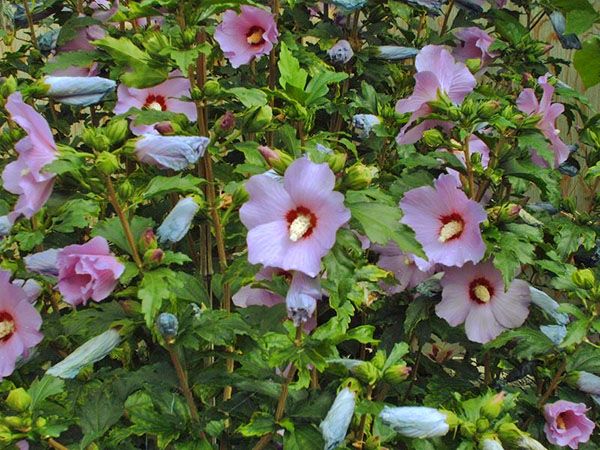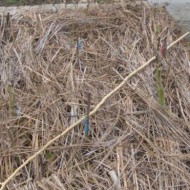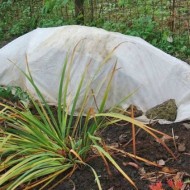How and what to shelter garden hibiscus for the winter from cold weather
Content
When hibiscus needs shelter
Not every variety of hibiscus needs shelter: hybrids and herbaceous varieties are quite frost-resistant, therefore, it is not necessary to shelter them in regions with moderately cold winters. Syrian varieties (especially terry) are more delicate and delicate, they must be insulated in the fall. The more a flower grows, the more resistant it becomes to cold and frost.
Herbaceous varieties are pruned and sprinkled with soil or foliage. In harsh climatic conditions, where frosts often drop below 30 ° C, it is necessary to insulate all varieties of hibiscus, without exception. Particularly capricious and delicate exotics should be dug up and placed in a special container for wintering indoors.
In regions with difficult climatic conditions, even frost-resistant varieties under cover may die during the cold season. This may be due to the weakness of the plant, so when buying, be sure to make sure that the cutting is healthy and strong. Poor quality planting material is doomed to death. For those who live in the northern regions, it is better to opt for hybrid (red, pink and light pink hibiscus) and herbaceous (northern) varieties. You can try to plant and middle-aged tree-like Syrian species.
Video "Preparing for the winter of Syrian hibiscus"
From this video you will learn how to properly prepare Syrian hibiscus for the winter period.
Warming rules
Before you cover your hibiscus for the winter, you need to prepare it. Preparing hibiscus for shelter and wintering consists of several mandatory procedures: watering, hilling and mulching the soil, as well as cleaning or pruning. Treelike varieties do not need pruning, it is enough to clean dry shoots and leaves. In the case of pruning, the branches are shortened by ⅓, if desired, the side branches are pinched to form a new growth in the spring. Herbaceous varieties are pruned to stumps, leaving no more than 10 cm above the soil.
Before the onset of the first frost (individually in each region), it is necessary to carry out water-charging irrigation of shrub species. Moistening is carried out in several stages, but it must be completed before frost, otherwise an ice crust will form. A few days after watering, the ground in the near-stem zone of shrubs or the remains of herbaceous hibiscus is spud with a mixture of soil, humus and sand by 17–20 cm in order to protect the root system from overheating.
For mulching the soil, it is recommended to use garden perlite, which prevents the entry of fungal spores. Rotten manure can also be used. For autumn feeding, potash fertilizers and superphosphate are used in small quantities. The optimal period for fertilization is the interval between watering and hilling. This completes the care of the plant before insulation.
Experienced gardeners advise starting hibiscus shelter at a temperature of 5 to 8 ° C below freezing so that it has time to harden. Frost is not terrible for plants adapted to cold.To protect hibiscus in regions where frost is not more than 15 ° C in winter and weak autumn and spring frosts, frames covered with a special covering material are used. It can be spunbond, lutrasil, agrotex. It is not recommended to use such material for severe frosts. In the case of frosty snowy winters, spruce branches are the optimal material for shelter. It accumulates snow in itself, does not allow the plant to freeze or overheat. The lapnik is laid in the form of a hut, having previously wrapped the base of the branches with burlap.
Hibiscus is covered in two ways, depending on the variety. For shrubs, frames are used, which are wrapped with non-woven material in several layers. Herbaceous varieties and weaving varieties are bent to the ground, covered with a special material, then with a film and pressed down with a load.
Rodent protection
Rodents can crawl under shelters made of spruce branches and even frame structures in winter in search of food. Field mice gnaw completely the bark of the plant, which can cause irreparable harm to the plant and provoke its death. To prevent this from happening, traps and poisoned wheat are placed near or in the shelter, which can be purchased at gardening and hardware stores.
It is important to know not only how to properly prepare hibiscus for winter, but also not to miss the time when you need to remove the shelter. Staying a plant under cover for too long can lead to its damping out and death. But do not rush to get rid of the shrub if it does not bloom for a long time after a dormant period. There are varieties, in particular the Syrian varieties, which emerge from dormancy much later than hybrids and herbaceous varieties.





